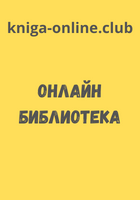Искусство жизнестойкости. Стратегии выносливости для духа и тела - Росс Эджли
146 Shapiro CM, Bortz R, Mitchell D, Bartel P and Jooste P (1981). ‘Slow-wave sleep: a recovery period after exercise.’ Science 214(4526): 1253–4.
147 Pilcher JJ and Huffcutt AI (1996). ‘Effects of sleep deprivation on performance: a meta-analysis.’ Sleep 19(4): 318–26.
148 Honn KA, Hinson JM, Whitney P and Van Dongen HPA (2019). ‘Cognitive flexibility: A distinct element of performance impairment due to sleep deprivation.’ Accident Analysis & Prevention 126: 191–7.
149 Alhola P and Polo-Kantola P (2007). ‘Sleep deprivation: Impact on cognitive performance.’ Neuropsychiatric Disease and Treatment 3(5): 553–67.
150 Van Dongen HPA, Maislin G, Mullington JM and Dinges DF (2003). ‘The cumulative cost of additional wakefulness: Dose-response effects on neurobehavioral functions and sleep physiology from chronic sleep restriction and total sleep deprivation.’ Sleep 26(2): 117–26.
Урок 19
151 Widdowson E (1980). ‘Adventures in nutrition over half a century.’ Proceedings of the Nutrition Society 39(3): 293–306.
152 Cordain L, Eaton SB, Sebastian A, Mann N, Lindeberg S, Watkins BA, O’Keefe JH and Brand-Miller J (2005). ‘Origins and evolution of the Western diet: health implications for the 21st century.’ American Journal of Clinical Nutrition 81(2): 341–54.
Урок 20
153 Ranchordas MK (2012). ‘Nutrition for Adventure Racing.’ Sports Medicine 42(11): 915–27.
154 Zimberg IZ, Crispim CA, Juzwiak CR and Antunes HKM (2008). ‘Nutritional intake during a simulated adventure race.’ International Journal of Sport Nutrition and Exercise Metabolism 18 (2).
155 Nikolaidis PT, Veniamakis E, Rosemann T and Knechtle B (2018). ‘Nutrition in ultra-endurance: State of the art.’ Nutrients 10(12): doi10.3390/nu10121995.
156 Peters EM (2003). ‘Nutritional aspects in ultra-endurance exercise.’ Current Opinion in Clinical Nutrition & Metabolic Care 6(4): 427–34.
157 Rodriguez NR, Di Marco NM and Langley S (2009). ‘American College of Sports Medicine position stand. Nutrition and athletic performance.’ Medicine and Science in Sport & Exercise 41(3): 709–31.
158 Economos CD, Bortz SS and Nelson ME (1993). ‘Nutritional practices of elite athletes. Practical recommendations.’ Sports Medicine 16(6): 381–99.
159 Venkatraman JT and Pendergast DR (2002). ‘Effect of dietary intake on immune function in athletes.’ Sports Medicine 32(5): 323–37.
160 Eden BD and Abernethy PJ (1994). ‘Nutritional intake during an ultraendurance running race.’ International Journal of Sport Nutrition and Exercise Metabolism 4(2): 166–74.
161 Kaidar-Person O, Person B, Szomstein S and Rosenthal RJ (2008). ‘Nutritional deficiencies in morbidly obese patients: a new form of malnutrition? Part A: vitamins.’ Obesity Surgery 18(7): 870–6.
162 Knez WL and Peake JM (2010). ‘The prevalence of vitamin supplementation in ultraendurance triathletes.’ International Journal of Sport Nutrition and Exercise Metabolism 20(6): 507–14.
163 Applegate EA (1991). ‘Nutritional considerations for ultra-endurance performance.’ International Journal of Sport Nutrition and Exercise Metabolism 1(2): 118–26.
164 Gleeson M and Bishop NC (2000). ‘Elite athlete immunology: importance of nutrition.’ International Journal of Sports Medicine 21(Suppl 1): S44–50.
165 Chandra RK (1997). ‘Nutrition and the immune system: an introduction.’ American Journal of Clinical Nutrition 66(2): 460S–463S.
166 Tarnopolsky MA, MacDougall JD and Atkinson SA (1988). ‘Influence of protein intake and training status on nitrogen balance and lean body mass.’ Journal of Applied Physiology 64(1): 187–93.
167 Chauveau MA and Kaufmann M. ‘Experiences pour la determination du coefficient de l’activite nutritive et respiratoire des muscles en repos et en travail.’ Comptes Rendus Hebdomadaires Des Seances De L’Academie Des Sciences 1887(104): 1126.
168 Ivy JL (1999). ‘Role of carbohydrate in physical activity.’ Clinics in Sports Medicine 18(3): 469–84.
169 Williams C, Brewer J and Walker M (1992). ‘The effect of a high carbohydrate diet on running performance during a 30-km treadmill time trial.’ European Journal of Applied Physiology and Occupational Physiology 65(1): 18–24.
170 Balsom PD, Gaitanos GC, S.derlund K and Ekblom B (1999). ‘High-intensity exercise and muscle glycogen availability in humans.’ Acta Physiologica Scandinavica 165(4): 337–45.
171 Burke LM, Cox GR, Culmmings NK and Desbrow B (2001). ‘Guidelines for daily carbohydrate intake: do athletes achieve them?’ Sports Medicine 31(4): 267–99.
172 Ibid.
173 Rapoport BI (2010). ‘Metabolic factors limiting performance in marathon runners.’ PLoS Computational Biology 6(10): e1000960.
174 Brown RC (2002). ‘Nutrition for optimal performance during exercise: carbohydrate and fat.’ Current Sports Medicine Reports 1(4): 222–9.
175 Romijn JA, Coyle EF, Sidossis LS, Gastaldelli A, Horowitz JF, Endert E and Wolfe RR (1993). ‘Regulation of endogenous fat and carbohydrate metabolism in relation to exercise intensity and duration.’ American Journal of Physiology 265(3): E380–91.
Урок 21
176 Jeukendrup AE (2017). ‘Training the gut for athletes.’ Sports Medicine 47(Suppl 1): 101–10.
177 Jeukendrup AE and McLaughlin J (2011). ‘Carbohydrate ingestion during exercise: effects on performance, training adaptations and trainability of the gut.’ Nestle Nutrition Institute Workshop Series 69(1): 1–17.
178 Levine MS, Spencer G, Alavi A and Metz DC (2007). ‘Competitive speed eating: truth and consequences.’ American Journal of Roentgenology 189(3): 681–6.
Эпилог
179 O’Donnell A, Morgan CA, Jovanov E, Andrasik F and Prevost MC (2002). The Warfighter’s Stress Response: Telemetric and Noninvasive Assessment. Naval Aerospace Medical Research Lab, Pensacola, FL.
180 Meredith LS, Sherbourne CD, Gaillot SL, Hansell L, Ritschard HV, Parker AM and Wrenn, G (2011). Promoting Psychological Resilience in the US Military. RAND Corporation, Santa Monica, CA.
Благодарности
Великий британский заплыв и издание этой книги стали возможны благодаря невероятным усилиям команды людей, самоотверженно поддерживавших меня на плаву. В первую очередь это, конечно, капитан Мэтт Найт, проявлявший на протяжении пяти месяцев героизм, который невозможно передать словами. За 157 дней он ни разу не ошибся, анализируя приливы или погоду. Его неоценимый вклад в это мероприятие войдет в историю парусного спорта. Что касается Сюзанны, то она, должно быть, купила, сварила, поджарила и приготовила более миллиона калорий только для меня; без ее участия и заботы заплыв просто был бы невозможен, поскольку она являлась связующим звеном между мной и нашим кораблем. Точно так же я не знаю, что делал бы без Тэза, Харриет, Пиони и Джемаймы, моих морских братьев и сестер, которые пересекали «ад и высокую воду» снова и снова, проводя меня через судоходные полосы, штормы и трехметровые волны. Проще говоря, это




